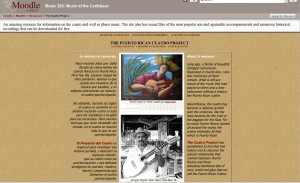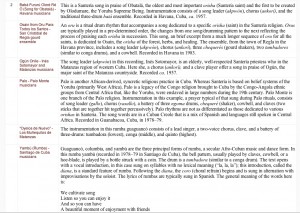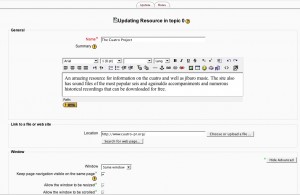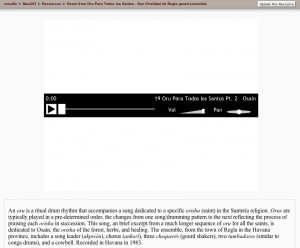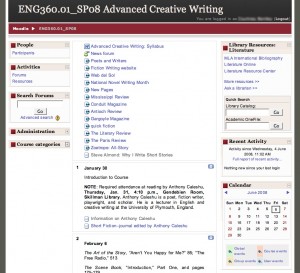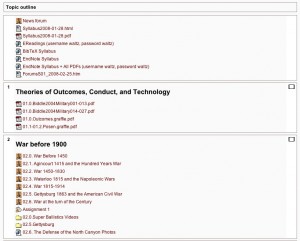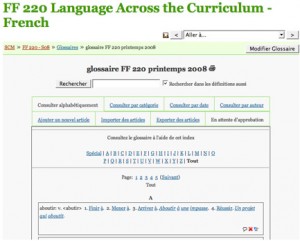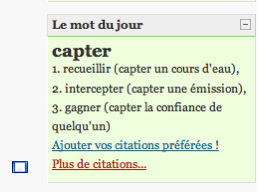Professor Mark Burford, Reed College
Course: Music of the Caribbean
Unlike my courses on European art music, for which there are numerous anthologies and CD sets or multiple recordings of canonical works, several other music classes I teach, and the way I teach them, require that I accumulate materials from several sources, especially recordings. For these courses, which generally center on popular music and non-European musical traditions, I have used Moodle primarily for four purposes: (1) creating a “virtual mixed tape” of listening and viewing examples for each class; (2) providing “liner notes” with background information to complement this assigned listening; (3) posting assigned reading; and (4) providing a clearinghouse for course-related resources and other items that come to my attention over the course of the semester. For these purposes Moodle has been an indispensable part of my courses. The annotations for the listening assignments have been particularly vital. These allow me to give the students some context for the recordings—personnel of performers, instrumentation, date and location of the recording, song lyrics, performance context, significance of the particular recording, etc.—and to draw connections with other recordings we’ve already listened to. Providing this information saves valuable class time; students can come to class with basic information and we can hit the ground running during conference. From a practical standpoint, it is remarkably fast and easy to upload materials and, more importantly, to adjust on the fly, since material can be shifted around or supplemented as necessarily.
